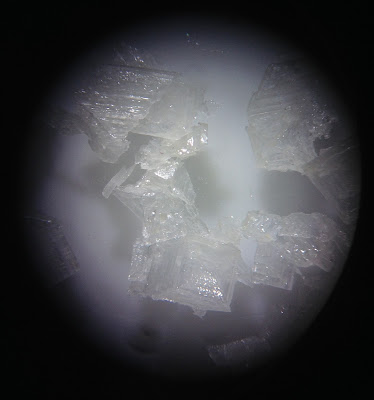This is a lovely cross section through a beautiful open fold set located on the access road to Hope Downs. The folded beds are part of the Wittenoom Formation which is interbedded shales and cherts (pictured) sandwiching calcitic dolomite. The formation is dated to 2600-2500 million years old. Careful examination of this outcrop provides important evidence for the structural development of the region.
 |

By tracing the Anticline and Syncline hinges we can see that the hinge lines are not parallel and the folds themselves lack symmetry. This suggests there has been a second deformation after the initial folding event which has rotated and further tightened the hinges. There is the added complication of rheological factors. The rheological difference between the shale unit (white) and the BIF-shale unit (stained red) means that they respond to strain differently. The shales (ex-muds) flow better, forming tighter folds without faulting while the more resilient BIF beds form open folds.
Looking further afield, we can examine a cross section through the Hope Downs mine published in D.F. Lascelles 2006 paper titled 'The Genisis of the Hope Downs Iron Ore Deposit, Hamersley Province, Western Australia' published in the Journal of Economic Geology.
The cross section shows a series of south dipping shallow thrust faults which steepen the norther limbs of the anticlines and provides pathways for mineralising fluids. While not 100% structural geology, the paper is well worth a read for those interested in the development of iron ore deposits in the eastern Pilbara.
The next post will examine the rocks on the eastern side of the road and see what 3D conclusions can be drawn from two 2d sections.
|




















.JPG)
.JPG)
.JPG)












.JPG)


.JPG)
.JPG)
.JPG)
.JPG)
.JPG)



